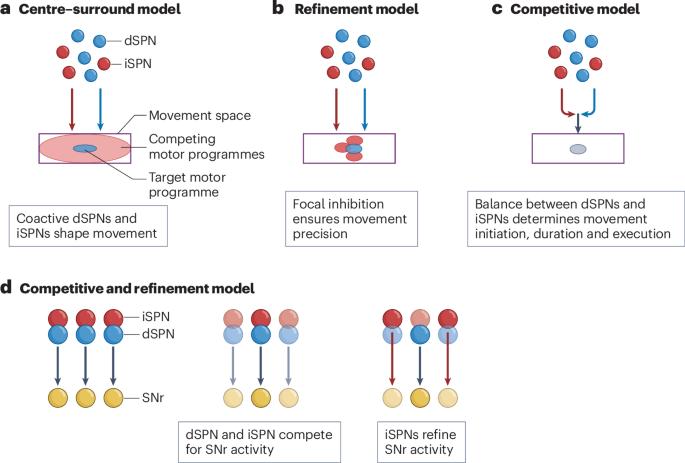从回避到新的行动:纹状体间接通路的多方面作用
IF 26.7
1区 医学
Q1 NEUROSCIENCES
引用次数: 0
摘要
最优强化学习的一个特点是,智能体学会避免导致负面结果的行为,同时仍在探索可能导致更好结果的替代行为。尽管假设基底神经节有助于这种计算,但其机制仍不清楚。在这里,我们关注纹状体间接通路的功能,并提出它是由突触可塑性规则调节的,该规则允许动物避免导致次优结果的行为。根据最近的实验发现,我们考虑了纹状体间接通路功能的现有理论,并讨论了表明纹状体中多巴胺释放的抑制增强了间接通路活性的研究。此外,我们强调了最近的研究表明,间接途径的激活可以触发一种行为,允许动物在抑制次优行为的同时探索新的行为。我们展示了我们的框架如何能够调和先前关于间接途径的相互矛盾的结果,并为未来的研究提出了实验建议。本文章由计算机程序翻译,如有差异,请以英文原文为准。


From avoidance to new action: the multifaceted role of the striatal indirect pathway
A hallmark of optimal reinforcement learning is that an agent learns to avoid actions that lead to negative outcomes while still exploring alternative actions that could lead to better outcomes. Although the basal ganglia have been hypothesized to contribute to this computation, the mechanisms by which they do so are still unclear. Here, we focus on the function of the striatal indirect pathway and propose that it is regulated by a synaptic plasticity rule that allows an animal to avoid actions that lead to suboptimal outcomes. We consider current theories of striatal indirect pathway function in light of recent experimental findings and discuss studies that suggest that indirect pathway activity is potentiated by the suppression of dopamine release in the striatum. Furthermore, we highlight recent studies showing that activation of the indirect pathway can trigger an action, allowing animals to explore new actions while suppressing suboptimal actions. We show how our framework can reconcile previously conflicting results regarding the indirect pathway and suggest experiments for future investigation. The functional roles of the striatal indirect pathway remain unclear. In this Perspective, Lee and Sabatini propose that a three-factor learning rule governs the activity of indirect striatal projection neurons, contributing to the learnt avoidance of actions with negative outcomes and the transition to alternative actions.
求助全文
通过发布文献求助,成功后即可免费获取论文全文。
去求助
来源期刊

Nature Reviews Neuroscience
NEUROSCIENCES-
自引率
0.60%
发文量
104
期刊介绍:
Nature Reviews Neuroscience is a multidisciplinary journal that covers various fields within neuroscience, aiming to offer a comprehensive understanding of the structure and function of the central nervous system. Advances in molecular, developmental, and cognitive neuroscience, facilitated by powerful experimental techniques and theoretical approaches, have made enduring neurobiological questions more accessible. Nature Reviews Neuroscience serves as a reliable and accessible resource, addressing the breadth and depth of modern neuroscience. It acts as an authoritative and engaging reference for scientists interested in all aspects of neuroscience.
 求助内容:
求助内容: 应助结果提醒方式:
应助结果提醒方式:


